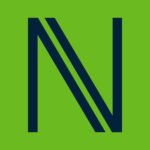Copyright © IDENTI Development Virtual Partner

Welcome to IDENTI Medical
Enhance your supply chain data with our AI technology.
Complete the ‘Quick Connect’ form below for more information.

Stay ahead in healthcare AI-tech
Subscribe to our newsletter for monthly insights on AI medical inventory technology.
This site uses cookies to ensure you get the best experience on our site. We undertake not to make any misuse. Feel free to read our privacy policy